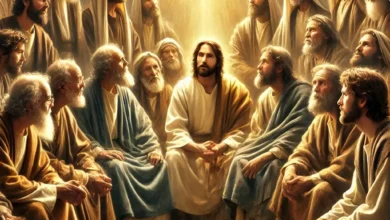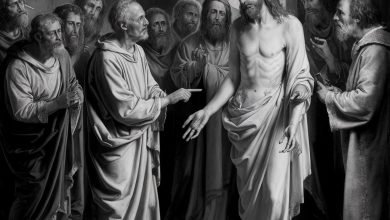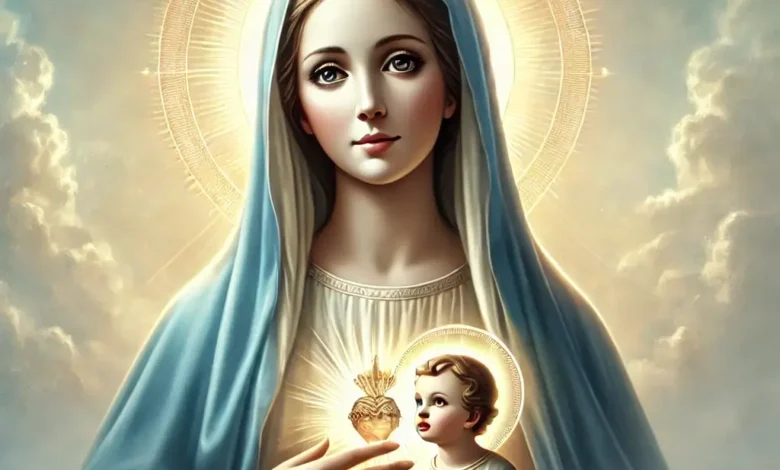
Who is the Virgin Mary and what was her role in the life of Jesus?
Mary, also known as the Blessed Virgin Mary, lived at the dawn of the Christian era and is the mother of Jesus Christ. She has been revered in the Christian church since the time of the Apostles and is a popular subject in Western art, music, and literature. Mary is known from biblical sources, but these sources are sparse, making it difficult to construct a cohesive biography. The development of Marian doctrine can be traced through the titles attributed to her in Christian history: the guarantor of the Incarnation, the Virgin Mother, the Second Eve, the Mother of God, ever virgin, immaculate, and assumed into heaven.
She has various feast days in different Christian traditions, some of which are obligatory holy days for Roman Catholics. There are international pilgrimage sites dedicated to her, known for various miracles, including Our Lady of Fatima, Our Lady of Lourdes, Our Lady of Guadalupe, Our Lady of Loreto, and Our Lady of Medjugorje.
The New Testament narrative of her humility and obedience to God’s message has made her a model for Christians throughout the ages. Christian devotion and theology have constructed a portrait of Mary that fulfills the prophecy attributed to her in the Magnificat (Luke 1:48): “Surely from now on all generations will call me blessed.”
فرست محتوا
References in the Bible (Who is the Blessed Virgin Mary?)
The first reference to Mary is the Annunciation story, which reports that she lived in Nazareth and was betrothed to Joseph (Luke 1:26 ff.). The last reference to her (Acts 1:14) places her among those who devoted themselves to prayer after Jesus’ ascension. She appears in several key events in the Gospels: the Annunciation; the Visitation with Elizabeth, the mother of John the Baptist (Luke 1:39 ff.); the birth of Jesus and his presentation at the temple (Luke 2:1 ff.); the visit of the Magi and the flight into Egypt (Matthew 2:1 ff.);
the Passover visit to Jerusalem when Jesus was twelve (Luke 2:41 ff.); the wedding at Cana (John 2:1 ff.); the attempt to see Jesus while he was teaching (Mark 3:31 ff.); and standing by the cross where she was entrusted to John the disciple (John 19:26 ff.). Even if these scenes are considered historical narratives, they do not add up to a unified picture of Mary.
Only in the nativity and passion narratives is her role significant: her acceptance of the privilege given to her at the Annunciation is a serious prelude to the Christmas story, and not only is she standing by the cross, but she is not identified as the “other Mary” who came to the tomb (Matthew 28:1), traditionally interpreted as knowing that Jesus’ body would not be there. On the other hand, the three incidents belonging to Jesus’ life contain elements of a fully human personality, suggesting she might not have completely understood Jesus’ true mission.
From the earliest days of Christianity, the themes of these scenes have formed the basis for thought and reflection about Mary. Christian communities and theologians differ in their interpretations of Mary, mainly based on where they draw the line for legitimate doctrinal development. Thus, a historical survey of this development also introduces the contemporary Christian thought about Mary.
Read more : Who was Tryphena in the Bible, and why is her name mentioned in Romans?
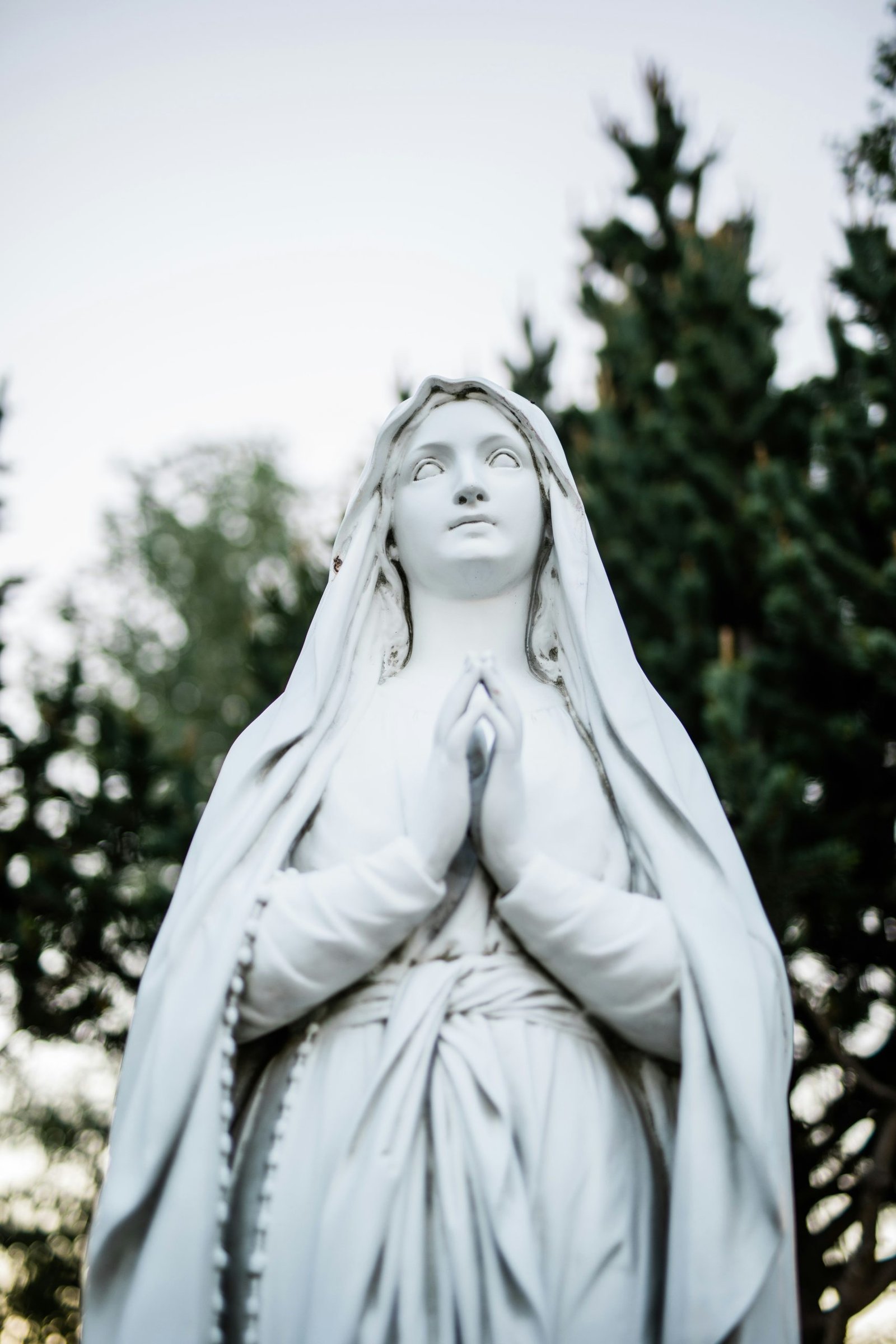
Religious Titles
The first likely reference to Mary in Christian literature is “born of a woman” in Galatians 4:4, written before any of the Gospels. This phrase emphasizes Jesus’ true humanity in contrast to Gnostic claims that he was not fully human. Some Gnostics claimed he passed through Mary’s body like light through a window. Reading any more into this phrase, such as implying “born of a woman but not of a man and woman,” is unwarranted. Thus, Mary is seen as the guarantor that the Son of God was truly born as a human. For the ancient world, a human parent was necessary to ensure someone was genuinely human, and from the beginning, Jesus’ human mother provided this assurance.
Some scholars have argued that the original meaning of “born of the Virgin Mary” in the Apostles’ Creed was the church’s insistence on Jesus’ true humanity. This insistence has been the minimum non-negotiable in all theories about Mary that have appeared in Christian history.
Her role as mother precedes any other roles attributed to her in devotion and teaching. Those who deny the virgin birth usually do so to affirm Jesus’ true humanity, seeing a contradiction between the idea of Jesus as the human son of a human mother and the idea that he had no human father.
Those who defend the virgin birth typically believe that true humanity was made possible when the Virgin Mary accepted her mission as the guarantor of the Incarnation (Luke 1:38): “Let it be with me according to your word.” This is the primary source of the title co-redemptrix, denoting participation with Christ in humanity’s redemption, attributed to Mary in Roman Catholic theology, though the exact nature of this participation remains debated among Catholic theologians.
The most detailed accounts of Mary in the New Testament are the infancy narratives in Matthew and Luke. Both emphasize that Jesus was conceived in Mary’s womb without any human involvement (Matthew 1:18 ff.; Luke 1:34 ff.). Some textual variants in Matthew 1:16, such as “Joseph begat Jesus,” have led scholars to question if such a claim was part of Matthew’s original account.
Matthew and Luke are the only New Testament references to this topic. Paul never mentions it; Mark begins with Jesus as an adult, and John’s Gospel, which starts with his pre-existence, does not refer to the virgin birth unless a variant reading in John 1:13 (“… who was born”) is followed instead of (“… who were born”). Matthew does not give theological significance to the miracle, but the words of the angel in Luke 1:35 may link the child’s holiness to the mother’s virginity.
In post-biblical Christian literature, the most detailed discussions of Mary deal with her virginity. According to the New Testament, the unified doctrine of all orthodox church fathers was that Mary conceived Jesus with her virginity intact, a doctrine included in early Christian creeds and affirmed by 16th-century reformers and most Protestant churches and believers since the Reformation.
One interpretation of Jesus’ character and work in the New Testament involves drawing parallels between him and Adam: “For as all die in Adam, so all will be made alive in Christ” (1 Corinthians 15:22). In this analogy, the contrast between Adam’s disobedience bringing sin into the world and Christ’s obedience bringing salvation from sin is decisive (Romans 5:12-19).
Whether the Annunciation story in Luke 1 intends to suggest a similar parallel between Eve and Mary became a topic of early Christian reflection. St. Irenaeus, writing around the end of the 2nd century, explained the parallel between Eve, a virgin who disobeyed God’s word, and Mary, also a virgin, who obeyed it:
“For it was necessary that Adam should be summed up in Christ, that mortality might be swallowed up and absorbed in immortality; and Eve in Mary, that a virgin might be the advocate of a virgin’s disobedience, by one’s becoming the virgin’s advocate.”
Irenaeus did not argue this point; he seemed to take the parallel for granted, indicating it was not his invention but part of a tradition he deeply respected. This parallel attributed to Mary and her obedience an active share in humanity’s redemption: all died in Adam, but Eve participated in the sin that brought this about; all were saved in Christ, but Mary participated in the life that made this possible.
The first major theological controversy about Mary concerned the appropriateness of the title Theotokos, meaning “God-bearer” or “Mother of God.” This title appears to have emerged in liturgical use, possibly in Alexandria, in the 3rd or 4th centuries; it was a logical deduction from the doctrine of the full divinity of Christ established as a creed in the 4th century. Those defending this doctrine also inferred the title.
Possibly, as John Henry Cardinal Newman, a 19th-century English theologian, suggested, the Council of Nicaea’s declaration in 325 that Christ was not merely the highest of creatures but belonged on the divine side of the line dividing creator and creation was responsible for the rapid growth of Marian devotion and speculation. By the end of the 4th century, Theotokos had established itself in various parts of the church.
Since this title’s supporters seemed to blur the distinction between the divine and human in Christ, Nestorius, the patriarch of Constantinople, opposed its use, preferring the less explicit Christotokos, meaning “Christ-bearer” or “Mother of Christ.” Along with other aspects of his teaching, Nestorius’s objections were condemned at the Council of Ephesus in 431.
Various conclusions can be drawn from the New Testament’s assertion of Mary’s virginity in conceiving Jesus, including the doctrines that she remained a virgin during childbirth (virginitas in partu) and that she remained a virgin throughout her life (virginitas post partum). The Apostles’ Creed seems to teach at least virginitas in partu when it states that Jesus was “born of the Virgin Mary.”
Although this doctrine about how Mary gave birth to Jesus first appears in the 2nd-century apocryphal Protevangelium of James, its roots and development are not easily traceable, and Roman Catholic and Protestant historians have reached conflicting conclusions. The rise of ascetic ideals in the church helped support the view of Mary as the model of perpetual virginity. This doctrine is neither confirmed nor denied but simply ignored in the New Testament, and Old Testament verses cited by church fathers to support it (such as Ezekiel 44:2 and the Song of Solomon 4:12) seem irrelevant to modern interpreters.
The idea of Mary as an ever-virgin (Greek aeiparthenos) is not found in 1st-century Christian writings. The Apostles’ Creed, though in forms reaching back to the 2nd century, does not affirm or deny Mary’s perpetual virginity. This term first appears in the acts of the 5th ecumenical council (Constantinople, 553), and Roman Catholic and Orthodox theologians have been especially concerned with defending it. The Protevangelium of James was highly influential in this doctrine’s development and, despite its doubtful historicity, has deeply impacted Christian tradition.
The doctrine of the Immaculate Conception of Mary states that she was free from original sin from the moment of her conception. Although suggested in the early church, it did not achieve prominence until the 12th century when the Norman Anselmian school debated it. It was vigorously promoted by the Franciscans from the 13th century onward and finally defined as a dogma by Pope Pius IX in 1854.
The doctrine was highly controversial, as evidenced by the arguments against it by prominent theologians like Thomas Aquinas, who felt that such a belief compromised the universal need for salvation through Christ. In response, it was argued that Mary’s preservation from original sin was an application of the merits won by her son. The doctrine remains distinctively Roman Catholic, though it has been embraced by some Anglo-Catholics and a few Orthodox theologians.
The final development of Marian doctrine is the Assumption of Mary, which states that her body was assumed into heaven after her death. This belief did not become popular until after the 6th century. Despite having ancient roots, the earliest references to it are found in apocryphal literature, and it was formally defined as dogma by Pope Pius XII in 1950. Unlike the Immaculate Conception, the doctrine of the Assumption is widely accepted by both Roman Catholic and Orthodox Christians and has been included in the Roman Catholic and Eastern Orthodox liturgical calendars.
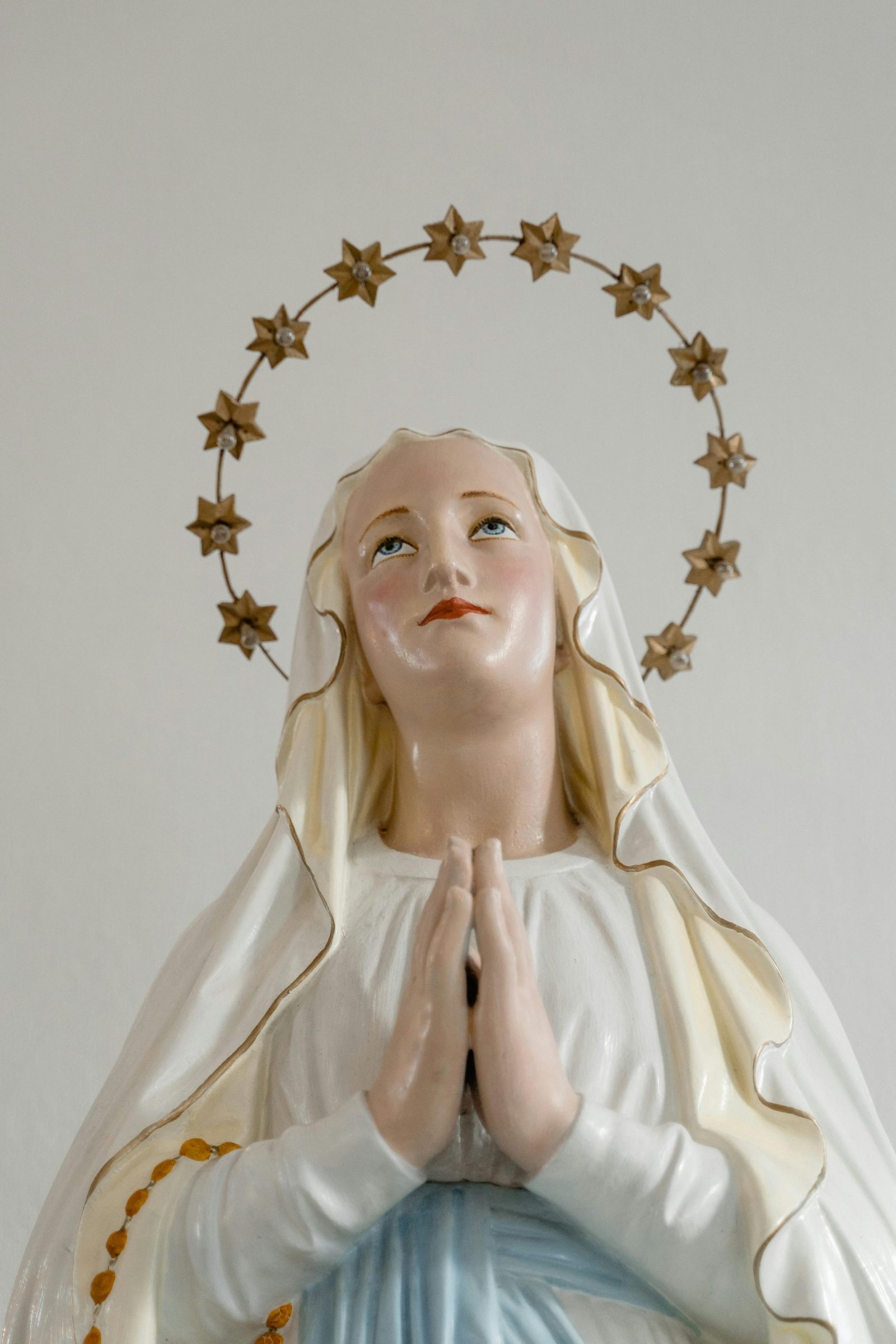
The cultural significance of the Virgin Mary
Beyond the official titles and honors bestowed upon her by Catholic Christianity, the Virgin Mary has acquired immense cultural significance. Popular devotion to Mary—manifested in celebrations, prayer services, Marian pilgrimage sites, and the rosary—has played a pivotal role in the lives of both Roman Catholics and Orthodox Christians; at times, this devotion has overshadowed other doctrines.
Modern Catholicism has emphasized that the doctrine of Mary is not an isolated belief but must be viewed within the context of two other Christian doctrines: the doctrine of Christ and the doctrine of the Church. What is said about Mary is derived from what is said about Jesus; this was the original meaning of Theotokos. She is also known as the ‘first believer’ and one in whom the humanity of the Church is representatively embodied.



